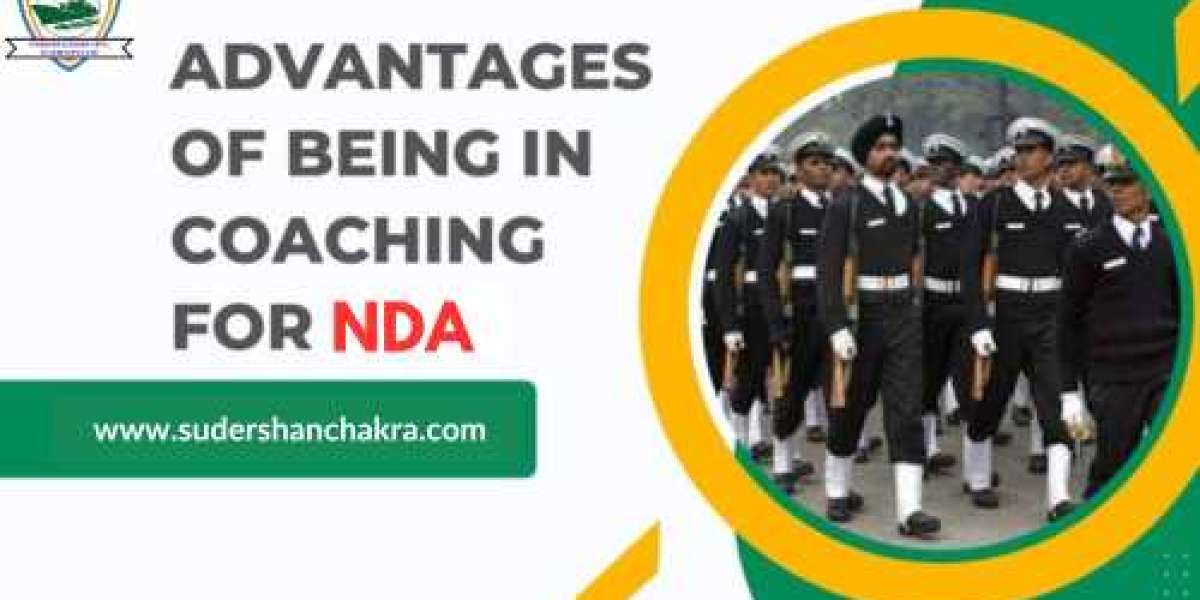National Defence Academy (NDA) is the gateway to a prestigious career in the Indian Armed Forces. It offers young aspirants the opportunity to join the Army, Navy, or Air Force as officers. The NDA selection process is rigorous and competitive, designed to identify candidates with leadership potential, mental toughness, and a commitment to serve the nation. This blog outlines the key steps of the selection process, including the NDA exam pattern, syllabus, the role of the SSB, and important tips for aspirants.
Sudershan Chakra offers top-notch preparation for aspiring defense candidates of NDA Coaching Agra. With a highly experienced faculty, they provide a structured course covering both the written exam and the SSB interview. The institute's personalized study plans, regular assessments, and mock tests ensure that students are fully prepared for every stage of the NDA selection process. Located in Agra, Sudershan Chakra focuses on developing the leadership and problem-solving skills essential for success in the armed forces. Join Sudershan Chakra today and take the first step toward your dream of joining the National Defence Academy!
1. NDA Selection Process
The NDA selection process involves two major stages:
Written Examination: Conducted by the Union Public Service Commission (UPSC), this stage tests a candidate’s academic knowledge and reasoning abilities.
SSB Interview: After passing the written exam, candidates are called for the Services Selection Board (SSB) interview, which evaluates psychological aptitude and leadership skills.
Candidates who successfully pass both stages must undergo a medical examination before being admitted to the NDA.
2. NDA Exam Pattern
The NDA written exam consists of two papers:
- Mathematics:
- Duration: 2.5 hours
- Total Marks: 300
- Questions: 120
- Marking Scheme: +2.5 for each correct answer, -0.83 for each incorrect answer
- General Ability Test (GAT):
- Duration: 2.5 hours
- Total Marks: 600
- Questions: 150
- Marking Scheme: +4 for each correct answer, -1.33 for each incorrect answer
The total marks for the written exam are 900, and the exam is conducted in an offline, objective format.
3. NDA Syllabus
The NDA syllabus is vast, covering a wide range of subjects:
- Mathematics: Algebra, trigonometry, calculus, vectors, statistics, and probability.
- General Ability Test (GAT):
- English: Grammar, comprehension, and vocabulary.
- General Knowledge: History, geography, physics, chemistry, current affairs, and general science.
Candidates should prepare thoroughly to cover all topics, focusing on both theoretical and practical knowledge.
4. SSB Interview Process
The SSB interview is the second stage of the selection process and lasts for five days. It assesses candidates' psychological aptitude, physical fitness, and leadership skills. You can sharp your skills with SSB Institute Agra.
5. Days of SSB
The SSB interview is a detailed, multi-stage process that takes place over five days:
- Day 1: Screening Test (Officer Intelligence Rating Test and Picture Perception Description Test)
- Day 2: Psychological Tests (Thematic Apperception Test, Word Association Test, Situation Reaction Test)
- Day 3 and 4: Group Testing (Group Discussion, Group Planning Exercise, Outdoor Tasks, Command Task)
- Day 5: Personal Interview and Conference (Final assessment and decision-making by the SSB board)
6. Procedure of SSB
The SSB interview is divided into two stages:
- Stage I: Screening, which includes the Officer Intelligence Rating (OIR) test and Picture Perception and Description Test (PPDT). Candidates who clear this stage move to Stage II.
- Stage II: This involves a series of psychological tests, group tasks, and a personal interview. The Group Testing Officer (GTO) evaluates candidates' performance in group exercises and outdoor activities.
7. How Many Candidates Are Selected at Last?
Out of the thousands who apply for the NDA exam, only a fraction make it to the final stage. On average, around 300-400 candidates are selected each year across all three forces (Army, Navy, and Air Force). The final selection depends on performance in both the written exam and SSB interview.
8. Parameters Checked by Officers in SSB
The officers at SSB assess candidates on 15 Officer-Like Qualities (OLQs), including:
- Effective Intelligence
- Reasoning Ability
- Communication Skills
- Courage
- Cooperation
- Sense of Responsibility
- Leadership
These qualities determine a candidate’s suitability for a leadership role in the armed forces.
9. Essential Points for NDA Aspirants
- Start Early: Preparation for the NDA exam should begin as early as possible to cover the vast syllabus.
- Physical Fitness: Maintaining physical fitness is crucial, as the SSB interview includes physical tasks.
- Mock Tests: Regularly practice mock tests to improve speed, accuracy, and time management.
- Build Leadership Skills: Focus on developing leadership, teamwork, and problem-solving abilities, which are key during the SSB.
- Stay Updated: Keep yourself informed about current affairs and general knowledge topics.
10. Difference Between NDA and CDS
Though both NDA and CDS (Combined Defence Services) exams are conducted by the UPSC for entry into the armed forces, there are key differences between the two:
- NDA:
- For entry after 10+2 (intermediate level).
- Provides admission to the National Defence Academy for pre-commission training.
- Age limit: 16.5 to 19.5 years.
- CDS:
- For entry after graduation.
- Provides admission to IMA, OTA, INA, and AFA.
- Age limit: 19 to 25 years.
The NDA is designed for younger aspirants, while CDS is for graduates looking to join the armed forces.
Conclusion
The NDA selection process is challenging but rewarding, offering aspirants the chance to serve the nation in the armed forces. By understanding the exam pattern, syllabus, and SSB procedure, candidates can prepare effectively and increase their chances of success. The difference between NDA and CDS provides clarity on which path to choose based on individual career goals. With the right preparation and mindset, the dream of joining the National Defence Academy is well within reach.








